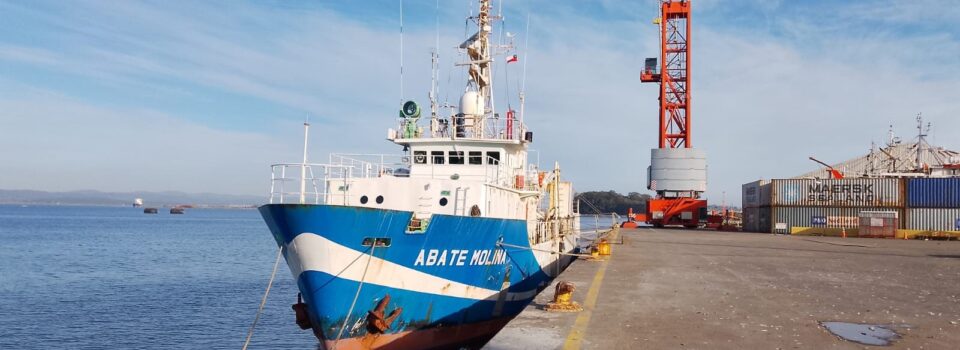Chilean scientific vessels strengthen studies on anchovy, common sardine and Spanish sardine along the coast of Chile
September 30th, 2024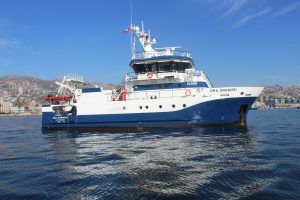 The B/I Abate Molina set sail to evaluate the condition of the anchovy between Valparaíso and Valdivia while the B/I Dra. Barbieri sets sail to estimate the biomass of the anchovy between the regions of Atacama and Coquimbo.
The B/I Abate Molina set sail to evaluate the condition of the anchovy between Valparaíso and Valdivia while the B/I Dra. Barbieri sets sail to estimate the biomass of the anchovy between the regions of Atacama and Coquimbo.
The scientific vessel B/I Abate Molina set sail from the Port of Talcahuano on August 28, to carry out the sampling of the project “Evaluation of the spawning stock of anchovy and common sardine between the regions of Valparaíso and Los Lagos, year 2024” within the framework of the “Basic or permanent research program for the regulation of fishing and aquaculture developed by the IFOP within the framework of the ASIPA 2024-2025 Agreement, financed by the Undersecretariat of Economy.
 2024 is the second year that this cruise is carried out by IFOP professionals, with Dr. Katty Donoso as project manager and cruiser. The objective of this cruise is to evaluate the spawning stock of anchovy and common sardine, during the period of maximum reproductive activity and to evaluate the oceanographic conditions associated with this process in the area between the Valparaíso and Los Lagos regions. To do this, a sampling of eggs and adults of these resources will be carried out, together with the associated planktonic communities and a record of temperature, salinity, oxygen and fluorescence between the surface and 500 m depth.
2024 is the second year that this cruise is carried out by IFOP professionals, with Dr. Katty Donoso as project manager and cruiser. The objective of this cruise is to evaluate the spawning stock of anchovy and common sardine, during the period of maximum reproductive activity and to evaluate the oceanographic conditions associated with this process in the area between the Valparaíso and Los Lagos regions. To do this, a sampling of eggs and adults of these resources will be carried out, together with the associated planktonic communities and a record of temperature, salinity, oxygen and fluorescence between the surface and 500 m depth.
This information will be used to estimate the biomass of the spawning stock, using the Daily Egg Production Method (MPDH), a method considered a fundamental tool for fishery management.
Together, environmental monitoring will allow us to put the Biopesqueros observations and results into context in order to analyze the influence of regional (ENOS) or local events on the distribution and abundance of these resources.
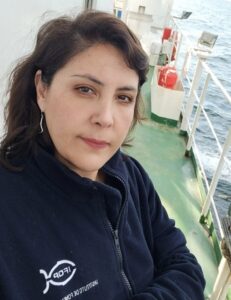
On the other hand, and simultaneously on Friday, August 30, Dr. Barbieri will set sail from Valparaíso to the north of Chile, on the project of Msc. Catherine Grendi Celedón, in order to “Evaluate the spawning stock of anchovy during the period of maximum reproductive activity and the oceanographic conditions associated with this process in the area between the regions of Atacama and Coquimbo.”
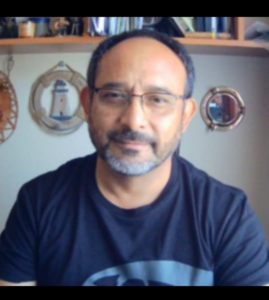 This cruise marks a milestone in the 60 years of IFOP, since a new state-of-the-art scientific vessel is incorporated, which makes its first oceanographic cruise led by the head of the Oceanography section, the outstanding oceanographer Hernán Reyes, who is also part of the Department of Oceanography and Environment of the Fisheries Research Division of IFOP.
This cruise marks a milestone in the 60 years of IFOP, since a new state-of-the-art scientific vessel is incorporated, which makes its first oceanographic cruise led by the head of the Oceanography section, the outstanding oceanographer Hernán Reyes, who is also part of the Department of Oceanography and Environment of the Fisheries Research Division of IFOP.
These cruises will be joined from September 24 by the cruise corresponding to the project led by Dr. Jessica Bonicelli “Bio-Oceanographic Conditions and Evaluation of the Anchovy Spawning Stock between the Regions of Arica and Parinacota and Antofagasta, Year 2024” which will evaluate the national spawning biomass of the anchovy stock shared with Peru using simultaneously the B/I Abate Molina and the Dra. Barbieri.
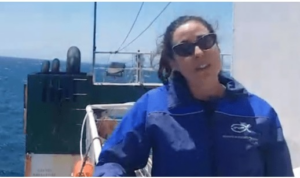 This cruise is especially important because it will evaluate the impacts of the last El Niño event on this stock. It will also be the national component of the joint cruise with Peru, Ecuador and Colombia that is carried out within the framework of the Permanent Commission of the South Pacific (CPPS) and will also be part of the coordinated efforts to monitor anchovy with Peru under the context of the GEF Humboldt 2 project.
This cruise is especially important because it will evaluate the impacts of the last El Niño event on this stock. It will also be the national component of the joint cruise with Peru, Ecuador and Colombia that is carried out within the framework of the Permanent Commission of the South Pacific (CPPS) and will also be part of the coordinated efforts to monitor anchovy with Peru under the context of the GEF Humboldt 2 project.
Dr. Letelier, head of DOMA, highlighted that three of DOMA’s major projects are coordinated by top-level researchers at the national level, who will jointly evaluate the impacts of El Niño 2023/24 on the biomass of anchovy and common sardine between Arica and Valdivia. In addition, Dr. Letelier assured that the three cruises of 2024 will begin a new investigation of the effect of El Niño and climate change in the oceanic zone off the Valparaíso region, since they will permanently carry out a deep oceanographic station on the 800-meter depth edge each time they set sail, call at or pass over the slope in front of Valparaíso Bay. These types of measurements will allow a medium- and long-term evaluation of changes in the pelagic and demersal ecosystems of mid-latitudes in the great Humboldt current system. The data and results of this monitoring period, unique in Chile, will be deployed by the IFOP Climate Change Monitoring System (SAPO Chile – sapo.ifop.cl ).
Press related links:
- aqua.cl
- seafood.media
- industriaspesqueras.com
- soychile.cl
- mundomaritimo.cl
- maray.cl
- portalportuario.cl
- g5noticias.cl
- mercurioantofagasta.cl
- mundomaritimo.cl
- termometro.cl
- agendamaritima.cl
- pagina19.cl
- region2.cl
- lodeldia.com
- estrellaantofagasta.cl
- desiertofm.cl
- mercuriocalama.cl
